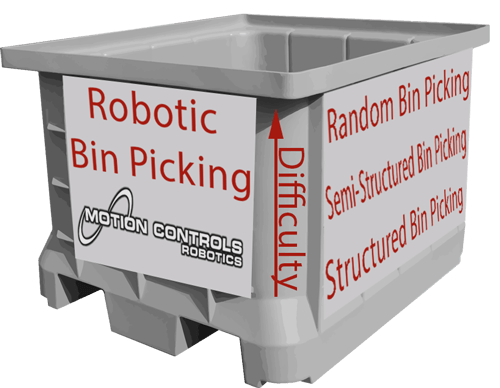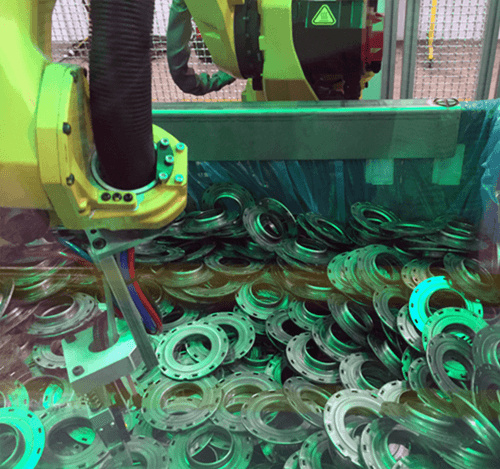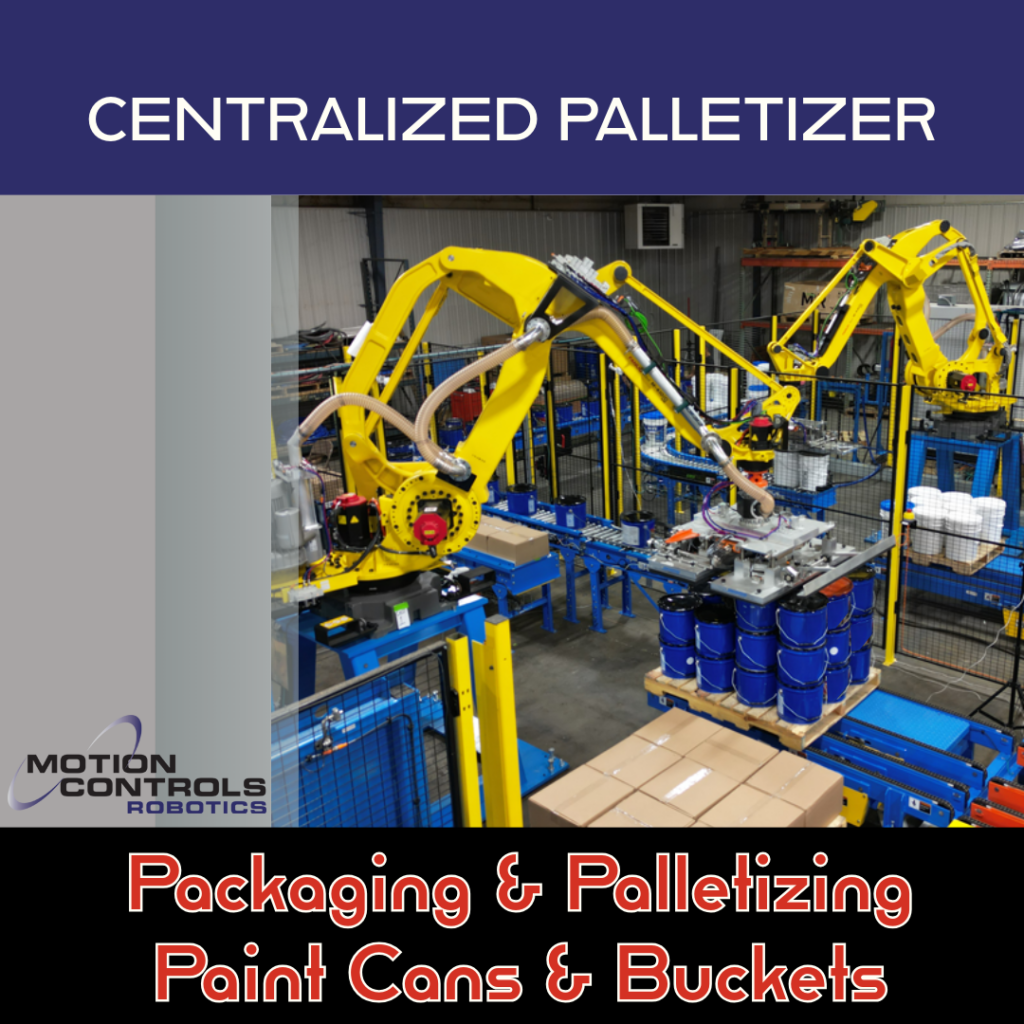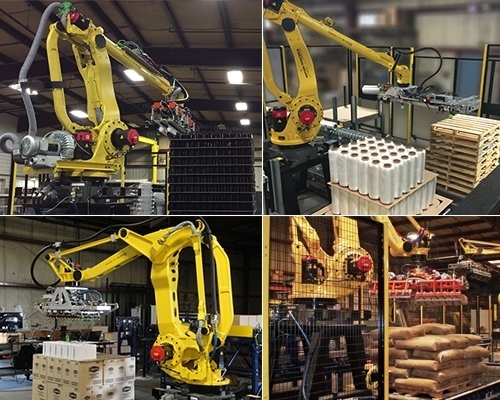 Robotic bin picking is a term used to describe a variety of processes where a robot is used to pick and place components from a bin. Depending on what happens upstream in the component manufacturing, the final bins can be setup in a variety of ways.
Robotic bin picking is a term used to describe a variety of processes where a robot is used to pick and place components from a bin. Depending on what happens upstream in the component manufacturing, the final bins can be setup in a variety of ways.
Structured Bin Picking
If in the upstream process, parts are placed into a bin in an organized, predictable pattern it is called structured bin picking.

- Fairly simple and straightforward robotic application that has been mainstream in facilities for many years.
- Requires more work at upstream process to organize parts
- Typically is least expensive
- Dunnage may or may not be required for layers and/or parts
- Can simplify or eliminate the need for expensive vision process to locate and inspect parts
- Vision inspection of some or 100% of parts can be accomplished
- Likely will have fastest part to part cycle times
Semi – Structured Bin Picking
The next level is a Semi-Structured bin where there is some predictability in part placement or parts are separated so that they can more easily be imaged and picked. This presents a slightly more difficult application for the robot, and it also encompasses a diverse amount of situations.

- Requires work at upstream process either to layer or place parts
- Mid-range expense depending on actual part arrangement
- Dunnage may or may not be required for layers and/or parts
- Simplifies the vision process to locate and inspect parts
- Vision inspection is an option
- Part to part cycle times again range based on the level or structure
Random Bin Picking
Lastly, there is the emerging application of completely unorganized parts that are thrown or dumped (bulk loaded) into a bin upstream in the process. Each bin that arrives at the robot cell contains components that are arranged differently and part orientation is completely unpredictable. This type of bin picking is commonly known as the “Holy Grail” in robotic applications. Technology has changed this perception.  The increase in camera resolution, processing power, and EOATs sensitivity and flexibility as allowed some robot integrators to meet this complicated task of picking randomly ordered parts from a bin.
The increase in camera resolution, processing power, and EOATs sensitivity and flexibility as allowed some robot integrators to meet this complicated task of picking randomly ordered parts from a bin.
- Save money upstream by being able to randomly place parts in a bin
- New vision and end of arm tooling technologies are used to locate and pick parts
- Part to part cycle times are longer but can be optimized to meet rate needs
The level of complication increases at each of the above levels and only a few robotic integrators have experience with bin picking random parts. MCRI has designed cells for random bin picking of automotive components, and has the experience needed to develop a random bin picking cell for your application. Use our request for robotic information contact form to get more information.




